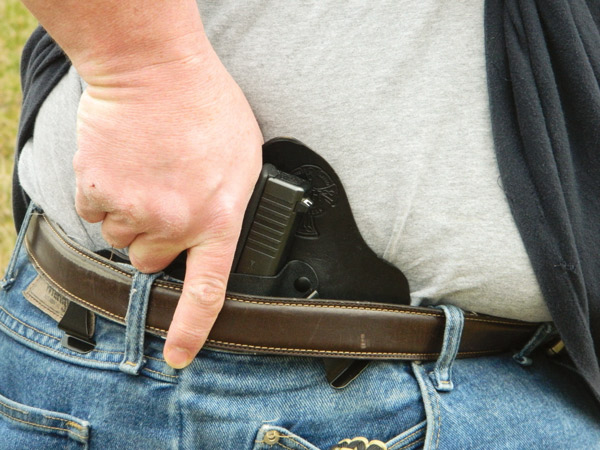

Choosing to carry a concealed handgun for self-defense is a good start to being prepared for an attack, but simply carrying a gun isn’t enough. You also have to know how to use that gun.
The basics of shooting and marksmanship are quite simple—grip, sights, trigger control and follow through—and can be easily learned. More advanced gun handling skills can be learned through research, or by attending one of the many firearm academies across the country.
While gun handling and accuracy skills are important, if you can’t get the gun out of the holster and into action quickly, you’ll be standing there with a lot of knowledge in your head and nothing in your hand. This makes the draw one of the most important components of proper self-defense. And you must be able to make the draw at any time and from any position.
Understanding Technique
Now before developing your draw, you have to decide how you’re going to carry. Some methods of carry provide easier access, while others impart deeper cover. There is no single correct way to carry a gun and only you can decide the method that works best for your purposes. But regardless of how you carry, you must master the draw for the holster system, or systems, that you choose.
The standard draw consists of four simple motions—the grip, the pull, the rotate and the presentation—that must be conducted in sequence or the entire process disintegrates and problems arise. Everything in the draw begins with the grip.
When you reach for your handgun, you must instantly obtain a shooting grip, with the trigger finger aligned along the frame. If you don’t get a firm grip on your handgun before it exits the holster, the draw can be fumbled and the gun dropped, which won’t do any good and could very well cause a lot of harm. You then pull the gun straight out of the holster before rotating it toward the target—from here, you can fire if the attacker has gotten too close to fully extend the gun. Finally, you present the gun toward the target, allowing the support hand to come up into a two-hand shooting grip as the sights line up.
Developing the Proper Draw
Now the problem with the standard draw is that it is based on carrying a gun in a strong-side holster, and there are as many different ways to carry a gun as there are types of handguns to carry. Fortunately, the draw is basically the same in all cases, with some minor variations.
Developing a proper draw takes time and practice, especially if you carry in multiple ways, as you must always be aware of where your gun is located and the best way to get that gun into action. You must develop the muscle memory for each and every way you carry. This is one of the reasons that many experts recommend carrying the same gun in the same way all the time. It doesn’t matter how good a shot you are if your gun is sitting in your holster.
The choice of carry method can also determine whether you can practice drawing at your local range. While some ranges do not allow draw training at all, others limit it to those methods like strong-side, pocket and ankle where the shooter is not sweeping the muzzle across adjacent areas. Unless you have your own range or shooting area, it’s very difficult to obtain live-fire training with cross draw, shoulder and small-of-back set ups. Availability of training locations should be included when considering how to carry a concealed handgun.

![Best Concealed Carry Guns In 2025 [Field Tested] Wilson Combat EDC X9S 1](https://gundigest.com/wp-content/uploads/Wilson-Combat-EDC-X9S-1-324x160.jpg)


![Best 9mm Carbine: Affordable PCCs [Tested] Ruger Carbine Shooting](https://gundigest.com/wp-content/uploads/Ruger-Carbine-Shooting-100x70.jpg)
![Best AR-15: Top Options Available Today [Field Tested] Harrington and Richardson PSA XM177E2 feature](https://gundigest.com/wp-content/uploads/Harrington-and-Richardson-PSA-XM177E2-feature-100x70.jpg)
